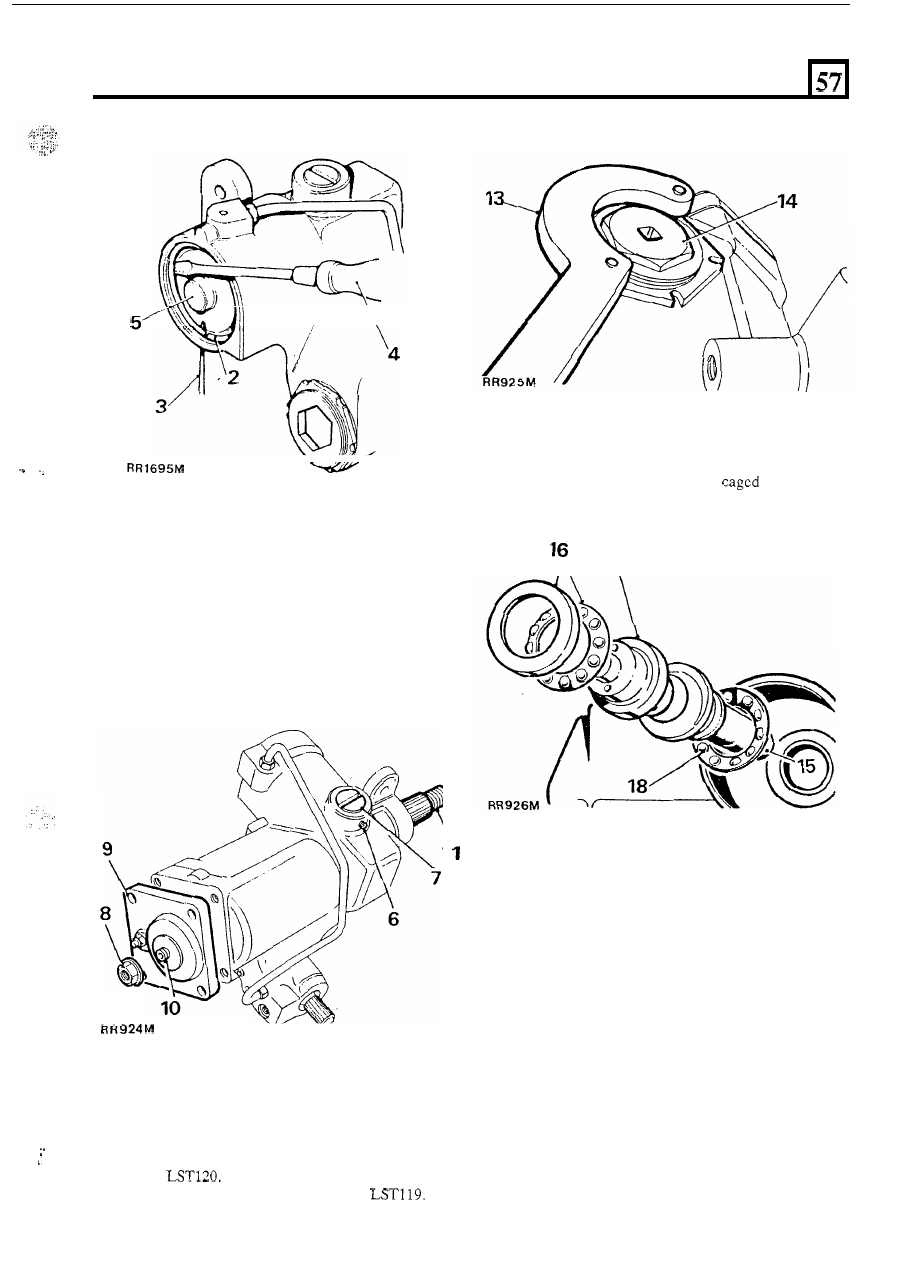Defender 90 / 110 / 130. Manual - part 107

STEERING
.
\
.
6.
Slacken the grub screw retaining the rack pad
7.
Remove the rack pad adjuster.
8.
Remove the sector shaft adjuster locknut.
9. Remove the sector shaft cover fixings.
adjuster.
10. Screw in the sector shaft adjuster until the cover is
11. Slide out the sector shaft.
removed.
15.
Tap the splined end of the spindle shaft to free the
16. Withdraw the bearing cup and
ball bearing
bearing.
assembly.
17
\
A
17. Withdraw the valve and worm assembly.
18. Withdraw the inner bearing ball race and shims.
Retain the shims.
continued
12. Withdraw the piston, using a suitable bolt screwed
13. Remove the worm adjuster locknut using
‘C’
14.
Remove the worm adjuster
using socket
into the tapped hole in the piston.
spanner,
.
.
,
21